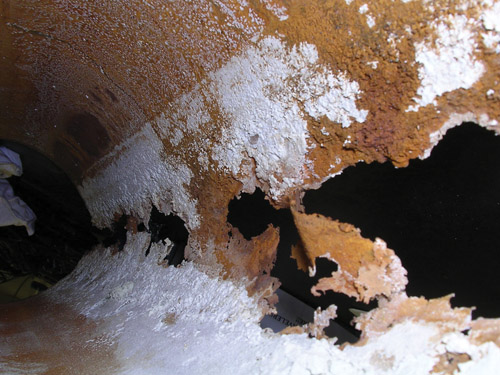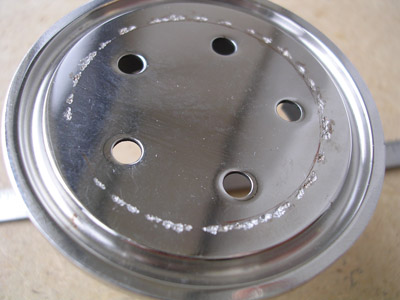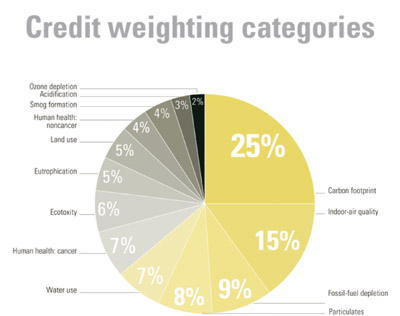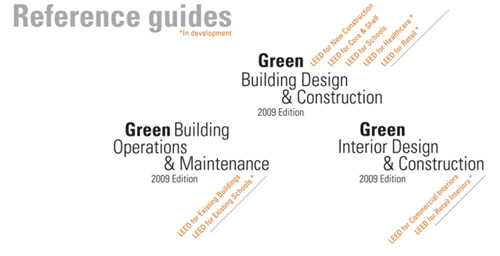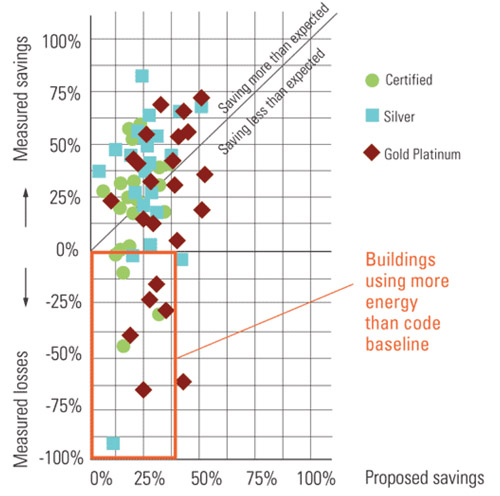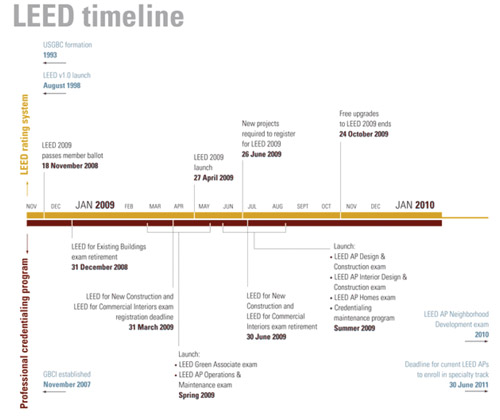Despite all the ramifications and complexities of 2008, the National Insulation Association (NIA) World is strong, and its future is filled with opportunities. The NIA World encompasses the commercial and industrial insulation market segment, including all facets of mechanical insulation; a significant portion of commercial building insulation; metal building insulation; and a part of the heating, ventilating, and air conditioning (HVAC) market. It does not include the majority of insulation-related activities in the HVAC, residential, original equipment manufacturer, automotive, appliance, aerospace, and other specialty markets.
Now is our time, but it will take approaching the future with vision and commitment to make a difference. Many people and companies spend an enormous amount of energy and resources in an effort to predict how bad things will be and to react accordingly. What if those resources were enthusiastically focused on and invested in accelerating recovery and exiting the struggling economy stronger than when we entered this unprecedented time of uncertainty?
What a difference a year makes. Who among us would have predicted the 2008 roller coaster ride, and especially the twists and turns of the last 6 months of 2008? Last year’s “The State of the Industry” quoted someone as saying, “My crystal ball is foggy.” Now, that same person would likely indicate that his crystal ball is broken.
The industry has never been good at forecasting growth rates. Certainly, 2008 was not an exception to that rule. Many industries probably missed the mark in 2008, and 2009 will probably challenge most industry veterans.
While the various components of the economy that affect the mechanical insulation industry were developing, producing ill effects for the United States and global economy, many companies in the NIA World were enjoying an extremely good year in 2008. However, there is no doubt the industry has begun to feel the effects of the economy and the challenges it presents. Still, the opportunities remain abundant. History can be a great reference: We have been here before, and we emerged stronger and better then. We will again. The frequency and severity of business cycles may vary, but they will eventually occur in all businesses, and the NIA World is not an exception. Without question, these cycles present challenges, but they also give birth to opportunities.
Both 2009 and 2010 will be prime examples of the varying forecasts within the NIA World. Depending on geographical service area, level and sustainability of a company’s backlog, mix of business among industry segments (industrial, commercial, etc.), product or service line diversity, domestic versus international business, and more, some will be forecasting “doom and gloom” while others will be cautiously optimistic. Putting aside individual company forecasts, the industry is not immune to the effects of the U.S. and global economies, which will eventually touch all participants. Business owners may have already had to make some tough decisions, and there may be more in the future, but the opportunities for the industry are there. There may not have been a more opportune time in the last 10 to 20 years than right now.
Yes, it will take an investment and commitment. But the result could support increased current and long-term earnings, accelerate recovery, sustain and create new jobs, help reduce our country’s long-term dependency on foreign energy sources, and improve the environment. What is wrong with that formula?
When it comes to investment, commitment is not easy. It has many complexities due to bottom-line earning pressures; capital availability; shareholder expectations; the ever-present focus on today’s earnings versus the future; and a host of other considerations. Each of these subjects is important and cannot be ignored. However, the NIA World offers its end customers a unique opportunity. The simple internal rates of return on mechanical investments normally range between 6 months and 2 years. Those same investments can increase current earnings while strengthening long-term earnings estimates; provide additional free cash flow; improve a company’s environmental footprint by reducing greenhouse gas emissions; reduce our dependency on foreign energy sources; improve life-cycle costs; and sustain and/or create new jobs. Is that not the type of investment companies are looking for in today’s economy? To use a popular phrase, insulation maintenance and upgrades are basically “shovel ready.”
A new year, a new administration, a new economy: change is inevitable. With change come opportunities, but they will require a different approach than employed in the past—it will take an investment and commitment to embrace the challenges of change and opportunity.
Competing with Energy Conservation Initiatives
When the cost of a barrel of oil was $147 in mid-2008 and gas prices were approaching, and in some places exceeding, $4 a gallon, all we heard about was the need to explore alternative energy sources, expand drilling operations, and conserve energy. With the cost of a barrel of oil at $50 (as of January) and gas in many places below $1.70, that seems a distant memory. But it would be a mistake to reduce the commitment to exploring and implementing all forms of increased energy production, efficiency, and conservation. While everyone is enjoying the current low cost of oil, history has proven that similar events have reduced the focus on the bigger problem. Many are forecasting the cost of a barrel of oil will return, for a variety of reasons, to $90 to $100 a barrel, or potentially higher. This scenario has played out before.
It has always been puzzling that the need for energy conservation and efficiency—especially within the industrial and commercial market segments—is not bigger news. Energy efficiency is not the sole solution to current or future energy demands. But aren’t conservation and efficiency the fastest means to deliver results now, providing time for the technologies of the future to develop?
There are hundreds of energy conservation initiatives being offered across all market segments. Some are beneficial, while others appear to contain smoke-and-mirror calculations. Where does mechanical insulation fit? The value of insulation for energy conservation and efficiency has been proven for decades, yet it is often passed over for the fancy initiatives containing shiny moving parts, even though they have a longer payback period. Why is that?
The NIA World, as a general rule, does not recognize that it is competing with other energy conservation initiatives. The insulation industry must understand that it has to compete for maintenance and capital dollars in the energy conservation arena. Story after story is written about the benefits of new lighting technology, the need for insulation and winterization in homes, and installing triple-pane windows, high-efficiency motors, and smart meters. When was the last time a story about the benefits of mechanical insulation appeared in the same context as those other initiatives? The NIA World has a phenomenal story to tell, with time-tested and proven results. It is time to tell the story and compare results to those of other leading initiatives.
Recently, a government official said, “Everyone maintains and upgrades their insulation—that’s a no-brainer.” The reality is that while it should be a no-brainer, insulation upgrades are few and far between, and the percentage of missing or damaged mechanical insulation certainly has not decreased. If anything, it may have increased due to reduced maintenance budgets and insulation not being a priority. A maintenance process that can pay for itself in months, not years, sounds like a winning plan. So why do so few people of influence in the decision chain recognize the potential? Maybe they don’t know about it or understand that proven, quantitative means to demonstrate the benefits are readily available. It is time to simply tell the story in the energy conservation, efficiency, and emission reduction arena. We need to continually tell—no, shout—it from the highest rooftops, in boardrooms, and in legislative chambers across the country.
There are many pieces to the mechanical insulation energy conservation and efficiency puzzle. How much have insulation thicknesses increased over the last 20 or even 10 years in comparison to the cost of energy? The simple answer to that question is very little. Is the potential of increased future energy costs taken into consideration in the design of new insulation applications or the upgrading of existing systems? Again, a simple answer is probably not. Why not? Maybe the people of influence in the decision chain do not have the knowledge or tools to consider the long-term consequences. Imagine the difference an extra 1/2 to 1 inch of insulation would make. The difference is huge, and the incremental cost is small. More impressive is that users can reap the benefits of a significant return on investment in both today’s and tomorrow’s dollars.
The recent decline in oil prices has eroded the sense of urgency for energy conservation and efficiency, and lulled many into falsely believing the crisis is over. The urgency is still very real.
Reducing Greenhouse Gas Emissions
Reducing greenhouse gas emissions can be accomplished in two ways:
- Decreasing the consumption of fossil fuels
- Installing technology to extract emissions before they enter the atmosphere
It seems simple enough, but in today’s world few things are as simple as they seem.
Energy conservation and efficiency are major components to protecting the environment. But as long as greenhouse gases and carbon dioxide can be emitted without penalty, harmful practices will probably continue. The debate continues about the need for or value of federal regulations that would implement a formal carbon credit program or impose a carbon tax. These methods are being explored, and in some cases implemented, by various state initiatives. History has proven that when U.S. businesses are given incentives or regulated to accomplish certain objectives, they move forward. The incentive route is a good one.
The United States can’t solve the climate change problem alone. We must work through all the appropriate international organizations to create and enforce global programs to effect change. At the same time, we must avoid putting our products in a non-competitive position.
Keeping an Eye on the Bottom Line
Mechanical insulation is a powerful technology that is often overlooked, underutilized, and undervalued as an energy conservation, greenhouse emission reduction, and/or sustainability initiative. Its multiple long-term benefits are often unrecognized or relegated to the bottom of the priority list in favor of more glamorous alternatives. The general knowledge base related to the design, maintenance, and benefit analysis for mechanical insulation has eroded substantially over the last 10 to 15 years, leading to increased energy consumption and greenhouse gas emissions across all commercial, industrial, and mechanical industry segments.
Mechanical insulation is normally examined on a project or individual opportunity basis, so the magnitude of this opportunity across the industry has not been adequately portrayed. The increased use of mechanical insulation can help solve numerous hot-button, nationwide issues simultaneously, including:
- Conserving energy
- Reducing overall energy demand and our dependence on foreign energy sources
- Reducing greenhouse gas emissions
- Improving commercial infrastructure in the public, educational, and health-care sectors, among others
- Creating and preserving jobs in both the industrial and commercial markets
The return on investment with this technology is often between 6 months and 2 years.
Identification of the opportunities on a facility basis is relatively easy. The cost, contracts, schedules, and ultimate implementation can be finalized in weeks versus years, and the benefits are immediate. Industry (management, labor, and manufacturing) has developed a series of unbiased and widely accepted measurement tools and programs by which to qualify and quantify the value of this technology, including educational and awareness programs.
This is a simple concept. Why, then, is mechanical insulation not a priority initiative for energy conservation and efficiency, as well as the protection of the environment?
This may sound like an old cliche, but it’s all about money: money to provide effective awareness and educational initiatives in government and private business sectors; money to encourage businesses to invest in energy conservation and emission-reduction initiatives; money to encourage state and local governments to embrace and enforce changes; money to mandate and enforce changes in federal and private construction projects; and more.
Statistics, analysis, and good old-fashioned education about the value and benefits of increasing the use and maintenance of mechanical insulation systems are needed within the federal and state governments and the private business sectors. The mechanical insulation industry has changed. No one segment can rely on another to develop and create educational or growth opportunities. There has never been a more opportune time or as big an appetite for new ideas. The window of opportunity, however, is small. The industry needs to join in a concerted and continuous effort to:
- compete with other energy-efficiency initiatives
- change how mechanical insulation is viewed
- promote governmental incentives
- provide awareness and educational programs
- preserve and create job opportunities
- increase industry professionalism
All these steps can speed recovery from the current state of the economy and, ultimately, provide sustainable industry growth.
The industry needs to embrace change and new ideas. It is time to venture down new paths within federal and state government and business circles to secure the industry’s place among today’s many opportunities.
This means investment. In today’s economy, shareholder expectations can be a difficult discussion. Is it best to invest in the opportunity to create change and longer term prosperity or to just accept whatever comes? Should business owners rely solely on the commitment of others or should they participate and encourage others to join them? These fundamental questions are at the core of the investment question.
What makes this time and opportunity so unique is the potential that can be created with a relatively small investment. Working together allows each company to invest modest sums individually, but cumulatively it equates to dollars that can be used to take advantage of this unique point in the economy.
One of NIA’s marketing slogans asks people to “Think About Insulation Differently.” Maybe now is the time to think differently about the value of investing in the association, as well as industry growth and improvement initiatives. The return could easily exceed expectations.
Rounding Up the Usual Suspects
The following are occurring in the insulation industry today:
- Industry consolidation continues, but at a slower pace
- Labor shortage concerns have lessened
- The influx of foreign products has slowed, but it remains a threat
- Technology advances are continuing
- Vertical integration has not gained momentum
- Spiraling price increases have slowed, if not stopped, and some may be in reverse
- Safety remains a primary focus in all companies
- The problems created by less-experienced “feet on the street” have not changed—if anything, they may have gotten worse
- Available capital and credit are a concern
All the normal topics have not gone away, but their importance seems to be overshadowed by the economy.
Looking Ahead
The NIA World is a good place to be. Despite all the challenges of the economy, the opportunities have never been greater. However, the industry needs to step forward with new and aggressive marketing and educational programs. Insulation is not a sexy subject; it lacks a “wow factor” to most users and most people of influence. They need help in understanding and quantifying the value of this simple and proven technology that, in essence, pays for itself.
It certainly seems that everyone’s initial reaction in a struggling economy is to reduce costs. Certainly conservatism and prudent spending are warranted. But is investing in initiatives to accelerate recovery and create long-term sustainable growth and earnings an expense or a smart investment? Potentially, no other time in our industry has presented more opportunities: to examine and increase minimum insulation standards; to increase awareness about the value of proper and timely maintenance; to make mechanical insulation recognized as a proven energy conservation and emission reduction alternative; to advocate for mechanical insulation upgrades in government and private sectors. Our time is now. Let’s not miss this opportunity.
Many industry veterans will feel this article has been preaching to the choir. But the opportunity for the industry to execute a new direction is unprecedented. A new strategy can grow the industry while supporting our nation in achieving energy independence, protecting the environment, and helping the economic recovery. We can make a difference. Not only is the NIA World a great place for industry veterans, but it is also a wonderful opportunity for the young generation looking for an industry in which to have a career. Let’s secure that opportunity for ourselves and the next generation.
Don’t fall prey to the same old sad stories about the economy and the daily newscasts about all the doom and gloom that exists. The NIA World remains a good place to be. This is an exciting time for our industry. Let’s make something happen.

